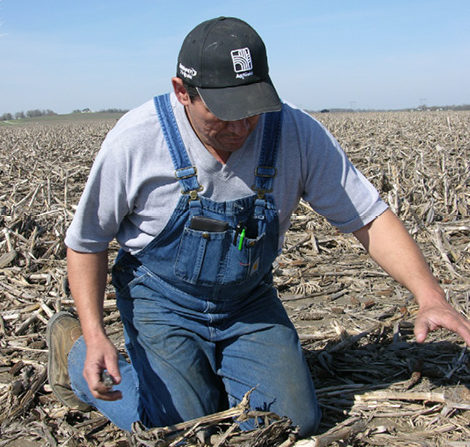No-Till Farmer
Get full access NOW to the most comprehensive, powerful and easy-to-use online resource for no-tillage practices. Just one good idea will pay for your subscription hundreds of times over.

As much as Shane Reinneck values residue, the Freeburg, Ill., no-tiller knows residue slows the warming of his soils, forcing him to be a little more patient than conventional-till neighbors when it comes to planting.
While that doesn’t bother him, if you added weeds to that residue and made it even more difficult for the soil to warm up, that would be a problem for Reinneck.
“What’s helped me lean more toward no-till is that you’ve got all this residue out here and that’s a shield to all of these heavy rainfalls we had last spring,” Reinneck says. “And by about the 10th of May, no-till benefits us because of its moisture-holding ability. It keeps that soil temperature at a decent level for the plant’s roots.
“I think the kicker for me to be 100% no-till was the fact that we started using a fall spray program. We started out clean; we stayed clean. We didn’t have near the green, dead stuff that you would have had to plant into after spraying in the spring.”
While many fields in southern Illinois have a misleadingly attractive purple glow to them each spring, the fact is henbit is rampant in those fields. The only thing you’ll see in Reinneck’s fields is crop residue.
Reinneck is confident that clean fields from fall applications allow his no-till fields to warm up quicker than no-tillers who wait until spring to spray.
Avoiding an early spring burndown trip keeps Reinneck from spraying at…